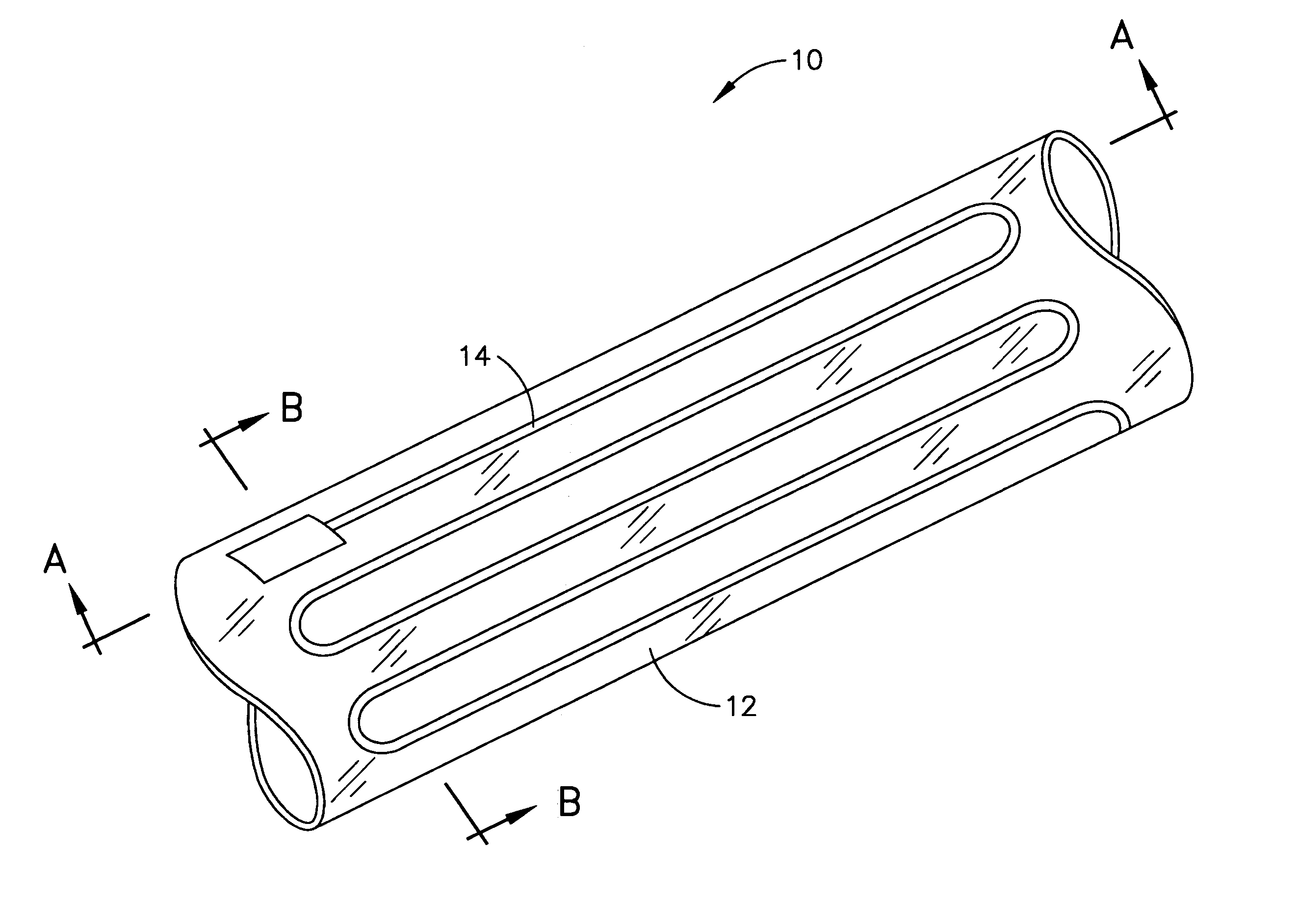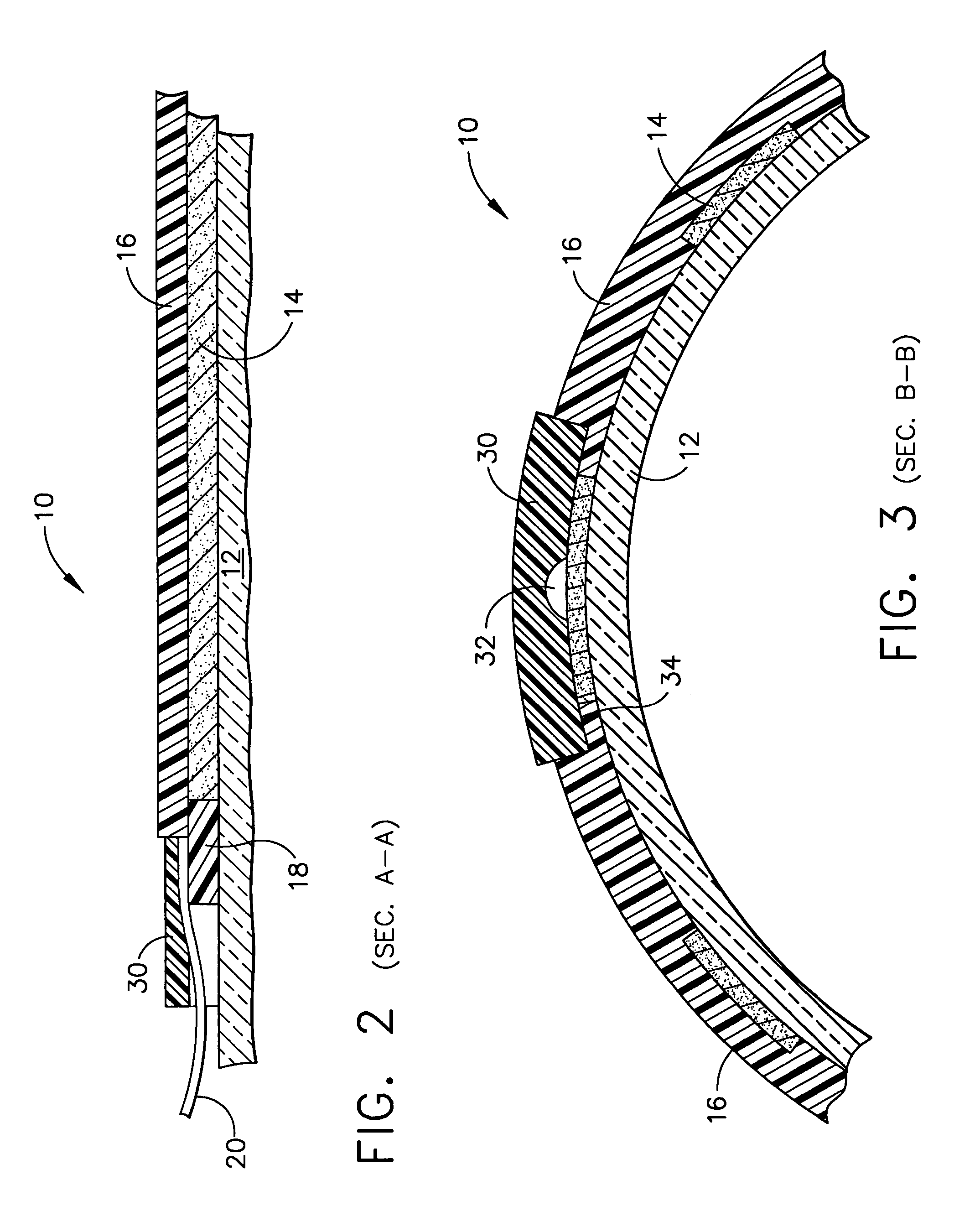In-line heater for use in semiconductor wet chemical processing and method of manufacturing the same
a technology for semiconductor wet chemical processing and in-line heaters, which is applied in the direction of fluid heaters, lighting and heating apparatus, and immersion heating arrangements. it can solve the problems of contamination problems, high heat loss, and inefficient heating of radiation-type heaters, and achieve the effect of reducing thermal stresses
- Summary
- Abstract
- Description
- Claims
- Application Information
AI Technical Summary
Benefits of technology
Problems solved by technology
Method used
Image
Examples
Embodiment Construction
[0018] The following description of the preferred embodiments is merely exemplary in nature and is in no way intended to limit the invention, its application, or uses.
[0019] Referring to FIG. 1, a semiconductor wet chemical processing in-line heater in accordance with the present invention is illustrated and generally indicated by reference numeral 10. The in-line heater 10 preferably defines a tubular configuration as shown and further comprises a substrate 12 and a resistive heating element 14 applied directly on the substrate 12. In accordance with the teachings of the present invention, the substrate 12 is formed of single crystal alumina (Al2O3), also known as sapphire. The single crystal alumina has extreme purity and has a moderate CTE of about 8×10−6 / ° C., as opposed to conventional direct-heating type substrates that have a much lower CTE of about 5.5×10−7 / ° C. The single crystal alumina also exhibits excellent chemical durability across a wide range of processing temperat...
PUM
| Property | Measurement | Unit |
|---|---|---|
| depth | aaaaa | aaaaa |
| temperatures | aaaaa | aaaaa |
| glass transition temperature | aaaaa | aaaaa |
Abstract
Description
Claims
Application Information
 Login to View More
Login to View More - R&D
- Intellectual Property
- Life Sciences
- Materials
- Tech Scout
- Unparalleled Data Quality
- Higher Quality Content
- 60% Fewer Hallucinations
Browse by: Latest US Patents, China's latest patents, Technical Efficacy Thesaurus, Application Domain, Technology Topic, Popular Technical Reports.
© 2025 PatSnap. All rights reserved.Legal|Privacy policy|Modern Slavery Act Transparency Statement|Sitemap|About US| Contact US: help@patsnap.com



